28 Mart 2012 Çarşamba
LES FAUVES
Fauvism is the style of les Fauves (French for "the wild beasts"), a short-lived and loose group of early twentieth-century Modern artists whose works emphasized painterly qualities and strong colour over the representational or realistic values retained by Impressionism. While Fauvism as a style began around 1900 and continued beyond 1910, the movement as such lasted only a few years, 1904–1908, and had three exhibitions. The leaders of the movement were Henri Matisse and André Derain.
Henri Matisse, Portrait of Madame Matisse (The Green Stripe), 1905, Statens Museum for Kunst, Copenhagen, Denmark
The Fauves remained a disparate group of artists. Their identity as a group only grew over time, and almost as soon as it was recognized, they sundered. Neither did they produce a manifesto defining their artistic aims, although Matisse's "Notes of a painter", written in 1908, echoes many of their concerns.
What united them was their explicit focus on the use of color as a means of emotive expression. André Derain once said, "I used color as a means of expressing my emotion and not as a transcription of nature." Likewise, Matisse once said, "There is nothing more difficult for a truly creative painter than to paint a rose because before he can do so he has first to forget all the roses that were ever painted." Together these quotes comprise the basic tenets of Fauvism.
The Fauves' preoccupation with surface effects, color, and personal expression, meant that they were less concerned with the individuality of their subject matter. The Impressionists and Post-Impressionists had concerned themselves with locating and depicting scenes of modern life, such as the cafes and alleyways of Paris, and the Expressionists would do likewise in the years to follow, painting street scenes in Berlin and portraits of prostitutes and other social outcasts. The Fauves, much like van Gogh and Cézanne, wanted to paint what they saw and turn that act of painting into an emotional and often spontaneous journey; each journey was defined by the colors and evident brush motions on the canvas.
André Derain, Charing Cross Bridge, London, 1906, National Gallery of Art, Washington, DC.
Albert Marquet
Charles Camoin
Louis Valtat
Henri Evenepoel
Maurice Marinot
Jean Puy
Maurice de Vlaminck
Henri Manguin
Raoul Dufy
Othon Friesz
Georges Rouault
Fauvism Notes
Fauvism was a style of painting developed in France at the beginning of the 20th century by Henri Matisse and André Derain.
The artists who painted in this style were known as 'Les Fauves'.
The title 'Les Fauves' (the wild beasts) came from a sarcastic remark by the art critic Louis Vauxcelles.
Les Fauves believed that colour should be used to express the artist's feelings about a subject, rather than simply to describe what it looks like.
Fauvist paintings have two main characteristics: simplified drawing and exaggerated colour.
Les Fauves were a great influence on the German Expressionists.
http://www.artyfactory.com/art_appreciation/art_movements/fauvism.htm
http://www.theartstory.org/movement-fauvism.htm
http://en.wikipedia.org/wiki/Fauvism
EXPRESSIONISM
EDWARD MUNCH, SCREAM (1893)
Expressionism was a modernist movement, initially in poetry and painting, originating in Germany at the beginning of the 20th century. Its typical trait is to present the world solely from a subjective perspective, distorting it radically for emotional effect in order to evoke moods or ideas.Expressionist artists sought to express meaning or emotional experience rather than physical reality.Expressionism was developed as an avant-garde style before the First World War. It remained popular during the Weimar Republic, particularly in Berlin. The style extended to a wide range of the arts, including painting, literature, theatre, dance, film, architecture and music.
The term is sometimes suggestive of emotional angst. In a general sense, painters such as Matthias Grünewald and El Greco are sometimes termed expressionist, though in practice the term is applied mainly to 20th-century works. The Expressionist emphasis on individual perspective has been characterized as a reaction to positivism and other artistic styles such as naturalism and impressionism.
Expressionism in Architecture
In architecture, two specific buildings are identified as Expressionist: Bruno Taut's Glass Pavilion of the Cologne Werkbund Exhibition (1914), and Erich Mendelsohn's Einstein Tower in Potsdam, Germany completed in 1921. The interior of Hans Poelzig's Berlin theatre (the Grosse Schauspielhaus), designed for the director Max Reinhardt, is also cited sometimes. The influential architectural critic and historian Sigfried Giedion, in his book Space, Time and Architecture (1941), dismissed Expressionist architecture as a part of the development of functionalism. In Mexico, in 1953, German émigré Mathias Goeritz, published the "Arquitectura Emocional" (Architecture emotional) manifesto with which he declared that "architecture's principal function is emotion". Modern Mexican architect Luis Barragán adopted the term that influenced his work. The two of them collaborated in the project Torres de Satelite (1957–58) guided by Goeritz's principles of Arquitectura Emocional. It was only during the 1970s that Expressionism in architecture came to be re-evaluated more positively
Expressionist architecture was individualistic and in many ways eschewed aesthetic dogma, but it is still useful to develop some criteria which defines it. Though containing a great variety and differentiation, many points can be found as recurring in works of Expressionist architecture, and are evident in some degree in each of its works.
Distortion of form for an emotional effect.
Subordination of realism to symbolic or stylistic expression of inner experience.
An underlying effort at achieving the new, original, and visionary.
Profusion of works on paper, and models, with discovery and representations of concepts more important than pragmatic finished products.
Often hybrid solutions, irreducible to a single concept.
Themes of natural romantic phenomena, such as caves, mountains, lightning, crystal and rock formations.
As such it is more mineral and elemental than florid and organic which characterized its close contemporary art nouveau.
Utilises creative potential of artisan craftsmanship.
Tendency more towards the gothic than the classical. Expressionist architecture also tends more towards the romanesque and the rococo than the classical.
Though a movement in Europe, expressionism is as eastern as western. It draws as much from Moorish, Islamic, Egyptian, and Indian art and architecture as from Roman or Greek.
Conception of architecture as a work of art.
http://en.wikipedia.org/wiki/Expressionism
http://en.wikipedia.org/wiki/Expressionist_architecture
LES NABIS
Les Nabis (pronounced nah-BEE) were a group of Post-Impressionist avant-garde artists who set the pace for fine arts and graphic arts in France in the 1890s. Initially a group of friends interested in contemporary art and literature, most of them studied at the private art school of Rodolphe Julian (Académie Julian) in Paris in the late 1880s.
In 1890, they began to successfully participate in public exhibitions, while most of their artistic output remained in private hands or in the possession of the artists themselves. By 1896, the unity of the group had already begun to break: The Hommage à Cézanne, painted by Maurice Denis in 1900, recollects memories of a time already gone, before even the term Nabis had been revealed to the public. Meanwhile, most members of the group—Maurice Denis, Pierre Bonnard, Edouard Vuillard—could stand, artistically, on their own. Only Paul Sérusier had problems to overcome—though it was his Talisman, painted at the advice of Paul Gauguin, that had revealed to them the way to go.
Les Nabis artists worked in a variety of media, using oils on both canvas and cardboard, distemper on canvas and wall decoration, and also produced posters, prints, book illustration, textiles and furniture. Considered to be on the cutting edge of modern art during their early period, their subject matter was representational (though often symbolist in inspiration), but was design oriented along the lines of the Japanese prints they so admired, and art nouveau. Unlike those types however, the artists of this circle were highly influenced by the paintings of the impressionists, and thus while sharing the flatness, page layout and negative space of art nouveau and other decorative modes, much of Nabis art has a painterly, non-realistic look, with color palettes often reminding one of Cézanne and Gauguin. Bonnard's posters and lithographs are more firmly in the art nouveau, or Toulouse-Lautrec manner. After the turn of the century, as modern art moved towards abstraction, expressionism, cubism, etc., the Nabis were viewed as conservatives, and indeed were among the last group of artists to stick to the roots and artistic ambitions of the impressionists, pursuing these ends almost into the middle of the 20th century. In their later years, these painters also largely abandoned their earlier interests in decorative and applied arts.
Aristide Maillol 1861-1944 French Sculptor
Pierre Bonnard 1867-1947 French Painter
Ker Xavier Roussel 1867-1944 French Painter
Georges Lacombe 1868-1916 French Painter/Sculptor
Edouard Vuillard 1868-1940 French Painter
Maurice Denis 1870-1943 French Painter
http://en.wikipedia.org/wiki/Les_Nabis
http://www.artcyclopedia.com/history/les-nabis.html
In 1890, they began to successfully participate in public exhibitions, while most of their artistic output remained in private hands or in the possession of the artists themselves. By 1896, the unity of the group had already begun to break: The Hommage à Cézanne, painted by Maurice Denis in 1900, recollects memories of a time already gone, before even the term Nabis had been revealed to the public. Meanwhile, most members of the group—Maurice Denis, Pierre Bonnard, Edouard Vuillard—could stand, artistically, on their own. Only Paul Sérusier had problems to overcome—though it was his Talisman, painted at the advice of Paul Gauguin, that had revealed to them the way to go.
Les Nabis artists worked in a variety of media, using oils on both canvas and cardboard, distemper on canvas and wall decoration, and also produced posters, prints, book illustration, textiles and furniture. Considered to be on the cutting edge of modern art during their early period, their subject matter was representational (though often symbolist in inspiration), but was design oriented along the lines of the Japanese prints they so admired, and art nouveau. Unlike those types however, the artists of this circle were highly influenced by the paintings of the impressionists, and thus while sharing the flatness, page layout and negative space of art nouveau and other decorative modes, much of Nabis art has a painterly, non-realistic look, with color palettes often reminding one of Cézanne and Gauguin. Bonnard's posters and lithographs are more firmly in the art nouveau, or Toulouse-Lautrec manner. After the turn of the century, as modern art moved towards abstraction, expressionism, cubism, etc., the Nabis were viewed as conservatives, and indeed were among the last group of artists to stick to the roots and artistic ambitions of the impressionists, pursuing these ends almost into the middle of the 20th century. In their later years, these painters also largely abandoned their earlier interests in decorative and applied arts.
Aristide Maillol 1861-1944 French Sculptor
Paul Ranson 1864-1909 French Painter
Felix Vallotton 1865-1925 Swiss/French Painter
Pierre Bonnard 1867-1947 French Painter
Ker Xavier Roussel 1867-1944 French Painter
Georges Lacombe 1868-1916 French Painter/Sculptor
Edouard Vuillard 1868-1940 French Painter
Maurice Denis 1870-1943 French Painter
http://en.wikipedia.org/wiki/Les_Nabis
http://www.artcyclopedia.com/history/les-nabis.html
symbolism
Symbolism originated in France, and was part of a 19th-century movement in which art became infused with mysticism. In literature, the style had its beginnings with the publication Les Fleurs du mal (The Flowers of Evil, 1857) by Charles Baudelaire. The works of Edgar Allan Poe, which Baudelaire admired greatly and translated into French, were a significant influence and the source of many stock tropes and images. The aesthetic was developed by Stéphane Mallarmé and Paul Verlaine during the 1860s and '70s. In the 1880s, the aesthetic was articulated by a series of manifestos and attracted a generation of writers. The name "symbolist" itself was first applied by the critic Jean Moréas, who invented the term to distinguish the symbolists from the related decadents of literature and of art. French Symbolism was both a continuation of the Romantic tradition and a reaction to the realistic approach of impressionism. It served as a catalyst in the outgrowth of the darker sides of Romanticism and toward abstraction.
The term Symbolism means the systematic use of symbols or pictorial conventions to express an allegorical meaning. Symbolism is an important element of most religious arts and reading symbols plays a main role in psychoanalysis. Thus, the Symbolist painters used these symbols from mythology and dream imagery for a visual language of the soul.
Symbolist painters stressed art’s subjective, symbolic, and decorative functions and turned to the mystical and occult in an attempt to evoke subjective states of mind by visual means. Though aspects of Symbolism appear in the work of Paul Gauguin, Vincent van Gogh, and the Nabis, its leading exponents were Gustave Moreau, Odilon Redon, and Pierre Puvis de Chavannes. Though associated primarily with France, it flourished all over Europe, had great international impact, and influenced 20th-century
A List of the Greatest Symbolist Painters
Man Ray American 1890-1976
Odilon Redon 1840-1916
Edvard Munch Norwegian, 1863-1944
Gustave Moreau French 1826-1898
Diego Rivera Mexican, 1886-1957
William Blake British, 1757-1827
http://www.huntfor.com/arthistory/c19th/symbolism.
http://en.wikipedia.org/wiki/Symbolism_(arts)
http://www.britannica.com/EBchecked/topic/1570978/Symbolism
http://www.historyofpainters.com/symbolist.htm
The term Symbolism means the systematic use of symbols or pictorial conventions to express an allegorical meaning. Symbolism is an important element of most religious arts and reading symbols plays a main role in psychoanalysis. Thus, the Symbolist painters used these symbols from mythology and dream imagery for a visual language of the soul.
Symbolist painters stressed art’s subjective, symbolic, and decorative functions and turned to the mystical and occult in an attempt to evoke subjective states of mind by visual means. Though aspects of Symbolism appear in the work of Paul Gauguin, Vincent van Gogh, and the Nabis, its leading exponents were Gustave Moreau, Odilon Redon, and Pierre Puvis de Chavannes. Though associated primarily with France, it flourished all over Europe, had great international impact, and influenced 20th-century
A List of the Greatest Symbolist Painters
Man Ray American 1890-1976
Odilon Redon 1840-1916
Edvard Munch Norwegian, 1863-1944
Gustave Moreau French 1826-1898
Diego Rivera Mexican, 1886-1957
William Blake British, 1757-1827
The Apparition. Gustave Moreau c. 1876
The Cyclops, 1914, Odilon Redon
http://www.huntfor.com/arthistory/c19th/symbolism.
http://en.wikipedia.org/wiki/Symbolism_(arts)
http://www.britannica.com/EBchecked/topic/1570978/Symbolism
http://www.historyofpainters.com/symbolist.htm
13 Mart 2012 Salı
neo impressionism
A Sunday Afternoon on the Island of La Grande Jatte. Georges Seurat.
Impressionism, French Impressionnisme, a major movement, first in painting and later in music, that developed chiefly in France during the late 19th and early 20th centuries. Impressionist painting comprises the work produced between about 1867 and 1886 by a group of artists who shared a set of related approaches and techniques. The most conspicuous characteristic of Impressionism in painting was an attempt to accurately and objectively record visual reality in terms of transient effects of light and colour. In music, it was to convey an idea or affect through a wash of sound rather than a strict formal structure.
Seurat’s greatest masterpiece, A Sunday Afternoon on the Island of La Grande Jatte, marked the beginning of this movement when it first made its appearance at an exhibition of the Société des Artistes Indépendants in Paris. During the emergence of neo-impressionism, Seurat and his followers strived to refine the impulsive and intuitive artistic mannerisms of impressionism.Neo-impressionists used disciplined networks of dots in their desire to instill a sense of organization and permanence. In further defining the movement, Seurat incorporated the recent explanation of optic and color perceptions.
The development of color theory in the late nineteenth century played a pivotal role in shaping the neo-impressionist style. Ogden Rood’s book, Modern Chromatics, with Applications to Art and Industry, acknowledged the different behaviors exhibited by colored light and colored pigment.While the mixture of the former created a white or gray color, that of the latter produced a dark, murky color. As painters, neo-impressionists had to deal with colored pigments.To avoid the dullness, they devised a system of pure-color juxtaposition. Mixing of colors was not necessary. The effective utilization of pointillism facilitated in eliciting a distinct luminous effect, and from a distance, the dots came together as a whole displaying maximum brilliance and conformity to actual light conditions.
What Are the Key Characteristic of Neo-Impressionism?
Tiny dots of local color.
Clean, clear contours around the forms.
Luminescent surfaces.
A stylized deliberateness that emphasizes a decorative design.
An artificial lifelessness in the figures and landscapes.
Painted in the studio, instead of outdoors like the Impressionists.
Carefully ordered and not spontaneous in its technique and intention.
Subjects about contemporary life and landscapes.
Best Known Artists:
Georges Seurat
Paul Signac
Camille Pissarro
Henry Edmond Cross
George Lemmen
Théo van Rysselberghe
Jan Toorop
Maximilen Luce
Albert Dubois-Pillet
http://www.britannica.com/EBchecked/topic/284143/Impressionism
http://arthistory.about.com/od/modernarthistory/a/Neo-Impressionism-Art-History-101-Basics.htm
http://en.wikipedia.org/wiki/Neo-impressionism
http://www.britannica.com/EBchecked/topic/408661/Neo-Impressionism
2 Mart 2012 Cuma
IMPRESSIONISM
Impressionism was an 19th century art movement that influences all branches of art, especially the painting. ''Fine Arts Academy'' established in France, was in the foreground which kept ahead the classism and was dealing the art with specific rules and inspection. Romanticism born in 19th century and Impressionism followed it have emerged with development of a new style by a group of the artist as opposed to the academic art enhancements.
Monet's work, called 'Impressionism' and got involved in a exhibition in Paris, gave the name of this movement.
Impressionism , sunrise - monet
Impressionist, have works outdoors and realizing them in the light of day, the painting was rescued from the artificial atmosphere of workshop.
Characteristics of Impressionist paintings include relatively small, thin, yet visible brush strokes; open composition; emphasis on accurate depiction of light in its changing qualities (often accentuating the effects of the passage of time); common, ordinary subject matter; the inclusion of movement as a crucial element of human perception and experience; and unusual visual angles. The development of Impressionism in the visual arts was soon followed by analogous styles in other media which became known as Impressionist music and Impressionist literature.
Impressionism in the painting, targets reflecting especially the visual impressions of light and color. the light of a particular time of day created impressions on the artist are very important. Claude Monet and Camille Pissarro was the leaders of the movement.
Representatives of Turkish Literature:
By recreating the sensation in the eye that views the subject, rather than delineating the details of the subject, and by creating a welter of techniques and forms, Impressionism became a precursor of various styles of painting, including Neo-Impressionism, Post-Impressionism, Fauvism, and Cubism.
Monet's work, called 'Impressionism' and got involved in a exhibition in Paris, gave the name of this movement.
Impressionist, have works outdoors and realizing them in the light of day, the painting was rescued from the artificial atmosphere of workshop.
According to the impressionists, the artist must base feelings and thoughts evoked by
what they see, and produce a personal interpretation to the fore
by throwing
realism and objectivity to the second plan .
In impressionism, literary work which is formed, carries the traces of the author's or the poet's personality because of that comment and impressions has changed from the artist to the artist and in his work, each artist expresses the emotion of itself.
There is no work of art about architecture as an impressionist point of view, but it can be mentioned about impressionist paintings of architectural structures at that time.
The urban landscapes produced by the impressionists are perhaps the most perfect expressions of the interdependence of leisure and productivity because city views were hardly new in art, but in impressionism urban landscape emerged as a significant genre.
In impressionism, suburban roads and city streets are themselves places of meaningful activity and they usually signified modernity to the 19th century viewer. In this paintings, like trains, roads suggest the freedom to travel and expand one's range. In focusing on manmade elements in landscape, impressionist paintings imply the extension of human control over nature through the creation of an infrastructure for transportation and commerce over and through it.
In city views the specificity of the modern landscape was far more visible and recognizable to the public than in suburban or country scenes, so the former were even better vehicles for redefining landscape painting.
Gustave Caillebotte, Paris Street: Rainy Day, 1877
There is no work of art about architecture as an impressionist point of view, but it can be mentioned about impressionist paintings of architectural structures at that time.
The urban landscapes produced by the impressionists are perhaps the most perfect expressions of the interdependence of leisure and productivity because city views were hardly new in art, but in impressionism urban landscape emerged as a significant genre.
In impressionism, suburban roads and city streets are themselves places of meaningful activity and they usually signified modernity to the 19th century viewer. In this paintings, like trains, roads suggest the freedom to travel and expand one's range. In focusing on manmade elements in landscape, impressionist paintings imply the extension of human control over nature through the creation of an infrastructure for transportation and commerce over and through it.
In city views the specificity of the modern landscape was far more visible and recognizable to the public than in suburban or country scenes, so the former were even better vehicles for redefining landscape painting.
Gustave Caillebotte, Paris Street: Rainy Day, 1877
The central figures in the development of Impressionism in France, listed alphabetically, were:
Frédéric Bazille (1841–1870)
Gustave Caillebotte (who, younger than the others, joined forces with them in the mid 1870s) (1848–1894)
Mary Cassatt (American-born, she lived in Paris and participated in four Impressionist exhibitions) (1844–1926)
Paul Cézanne (although he later broke away from the Impressionists) (1839–1906)
Edgar Degas (a realist who despised the term Impressionist, but is considered one, due to his loyalty to the group) (1834–1917)
Armand Guillaumin (1841–1927)
Édouard Manet (who did not regard himself, nor is he generally considered, as an Impressionist, but who supported the Impressionists and was a great influence on them), (1832–1883)
Claude Monet (the most prolific of the Impressionists and the one who embodies their aesthetic most obviously)[17] (1840–1926)
Berthe Morisot (1841–1895)
Camille Pissarro (1830–1903)
Pierre-Auguste Renoir (1841–1919)
Alfred Sisley (1839–1899)
Camille Pissarro, Hoarfrost, 1873, Musee d'Orsay, Paris
Representatives of the picture:
Auguste Renoir
Claude Monet
Van Gogh
Toulouse Leatrec
Sisley
Cezanne
Camille Pissarro
Representatives of Music
MRavel
CDebussy
JACarpenter
ORespighi
CTGriffes
IAlbéniz
PDukas
Representatives of Literature
Rilke
Arthur Rimbauld
James Jayce
Ahmed Hashim
Sahabettin Cenap
- An impression of the most important feature of the stream as needed to stimulate a reflection of feelings.
- Meaning is closed.
- The author of this trend, rather than directly sees the truth, and the sensation of having seen and are following is based on the impression he left on.
- It's more developed in literature and painting.
- they are not interested in external realm and its assets and objects.
- Impressionist artist didnt tell the outside world, but told the impressions of the outside world, clad in an ivory tower assets.
- Impressionism is mainly a symbol of freedom above all the symbols.
- Imaginary and abstract descriptions are given.
- Everything is explained, depending on the artist's sensation.
- Because of the importance of object's impact on people , it's the opposite of the realism.
- In their works, artists have expressed their inner worlds.
Kaydol:
Kayıtlar (Atom)

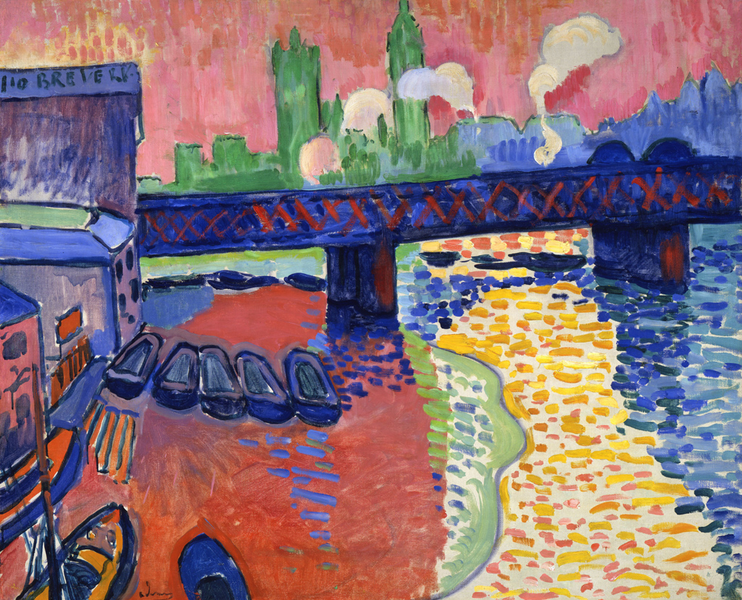

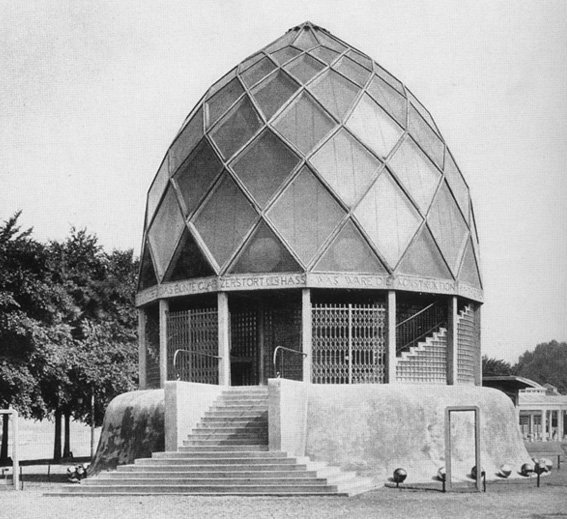



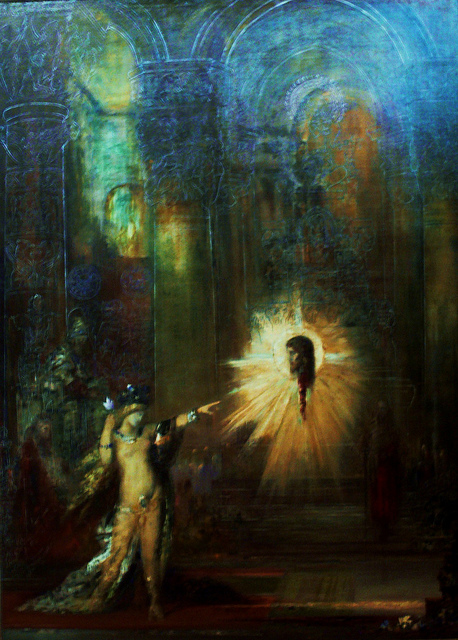
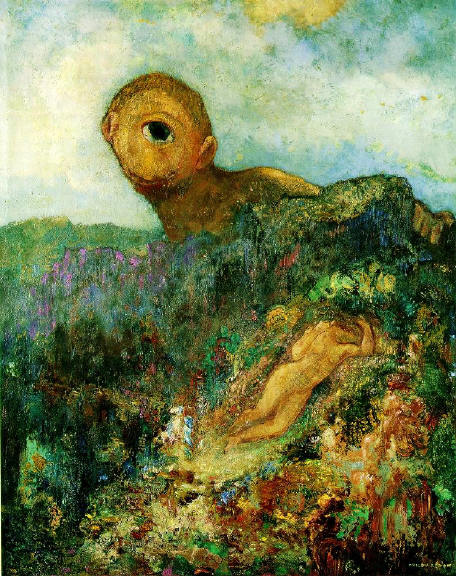


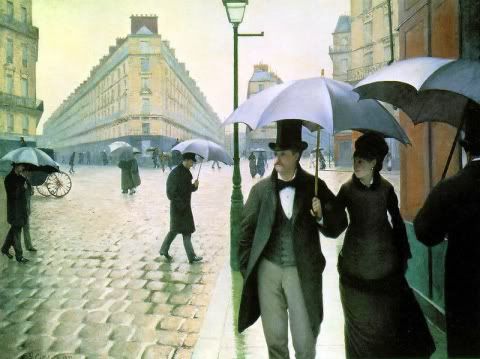
,_1873.jpg)
